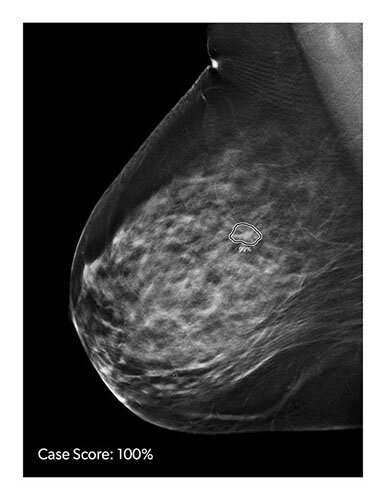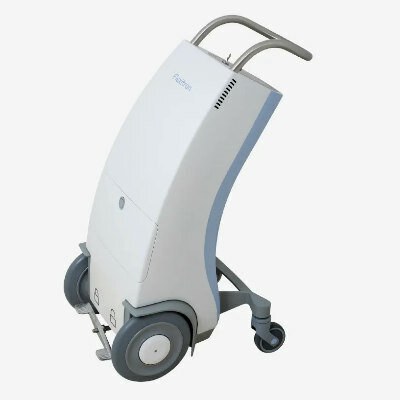Researchers Use AI to Detect Wrist Fractures
|
By MedImaging International staff writers Posted on 27 Apr 2021 |

Illustration
An automated system that uses artificial intelligence (AI) is effective at detecting a common type of wrist fracture on X-rays, according to a study.
Researchers at the Jeroen Bosch Hospital ('s-Hertogenbosch, The Netherlands) and Jheronimus Academy of Data Science ('s-Hertogenbosch, The Netherlands) who developed the AI-derived algorithm said that it could help speed diagnosis and allow earlier treatment.
Scaphoid fractures are injuries to one of the small bones of the wrist that typically occur when people try to break a fall with their hands. They comprise up to 7% of all skeletal fractures. Prompt diagnosis is important, as the fracture may fail to heal properly if untreated, leading to a host of problems like arthritis and even loss of function. Conventional X-ray is the imaging technique of choice for diagnosing scaphoid fractures, but it is often limited by overlap of the scaphoid with the surrounding bones of the wrist. Variations in wrist positioning and X-ray technique can also limit the visibility of fractures.
To overcome this, the researchers studied a system that could aid radiologists in detecting these common fractures. The system is based on deep learning with a convolutional neural network, a sophisticated type of AI that is capable of discerning subtle patterns in images beyond the capabilities of the human eye. While previous research has found that a convolutional neural network was inferior to human observers at identifying scaphoid fractures on X-rays, the new study used larger datasets and further algorithm refinements to improve detection. It also employed class activation maps, which are AI tools that help users understand what region of the image is influencing the network’s predictions. The researchers used thousands of conventional X-rays of the hand, wrist and scaphoid to develop the system.
They tested it on a dataset of 190 X-rays and compared its performance to that of 11 radiologists. The system had a sensitivity of 78% for detecting fractures with a positive predictive value of 83%, which refers to the likelihood that patients the AI identifies as having a fracture really do have one. Analysis showed that the system performed comparably to the 11 radiologists. The class activation maps were found to overlap with fracture lines in the scaphoid, suggesting they could be used for localizing potential fractures. The researchers plan to expand the scaphoid fracture detection system so that it can combine multiple X-ray views for its predictions. They are also conducting an experimental study in which radiologists are asked to identify scaphoid fractures on X-rays with and without the aid of the fracture detection system. The researchers hope to extend the system to fracture detection in other bone structures.
The system has significant potential in clinical use as it could reduce the incidence and costs of additional imaging exams and unnecessary therapy, speed up diagnosis and allow earlier treatment. The system may be able to assist residents, radiologists or other physicians by acting either as a first or second reader, or as a triage tool that helps prioritize worklists, potentially reducing the risk of missing a fracture. Such assistance could prevent delayed therapy and reduce complications that may lead to a subpar clinical outcome, according to the researchers.
“The convolutional neural network may also reduce unnecessary wrist immobilization, performed out of precaution, in more than half of the patients with clinical suspicion for having a scaphoid fracture,” said study lead author Nils Hendrix.
Related Links:
Jeroen Bosch Hospital
Jheronimus Academy of Data Science
Researchers at the Jeroen Bosch Hospital ('s-Hertogenbosch, The Netherlands) and Jheronimus Academy of Data Science ('s-Hertogenbosch, The Netherlands) who developed the AI-derived algorithm said that it could help speed diagnosis and allow earlier treatment.
Scaphoid fractures are injuries to one of the small bones of the wrist that typically occur when people try to break a fall with their hands. They comprise up to 7% of all skeletal fractures. Prompt diagnosis is important, as the fracture may fail to heal properly if untreated, leading to a host of problems like arthritis and even loss of function. Conventional X-ray is the imaging technique of choice for diagnosing scaphoid fractures, but it is often limited by overlap of the scaphoid with the surrounding bones of the wrist. Variations in wrist positioning and X-ray technique can also limit the visibility of fractures.
To overcome this, the researchers studied a system that could aid radiologists in detecting these common fractures. The system is based on deep learning with a convolutional neural network, a sophisticated type of AI that is capable of discerning subtle patterns in images beyond the capabilities of the human eye. While previous research has found that a convolutional neural network was inferior to human observers at identifying scaphoid fractures on X-rays, the new study used larger datasets and further algorithm refinements to improve detection. It also employed class activation maps, which are AI tools that help users understand what region of the image is influencing the network’s predictions. The researchers used thousands of conventional X-rays of the hand, wrist and scaphoid to develop the system.
They tested it on a dataset of 190 X-rays and compared its performance to that of 11 radiologists. The system had a sensitivity of 78% for detecting fractures with a positive predictive value of 83%, which refers to the likelihood that patients the AI identifies as having a fracture really do have one. Analysis showed that the system performed comparably to the 11 radiologists. The class activation maps were found to overlap with fracture lines in the scaphoid, suggesting they could be used for localizing potential fractures. The researchers plan to expand the scaphoid fracture detection system so that it can combine multiple X-ray views for its predictions. They are also conducting an experimental study in which radiologists are asked to identify scaphoid fractures on X-rays with and without the aid of the fracture detection system. The researchers hope to extend the system to fracture detection in other bone structures.
The system has significant potential in clinical use as it could reduce the incidence and costs of additional imaging exams and unnecessary therapy, speed up diagnosis and allow earlier treatment. The system may be able to assist residents, radiologists or other physicians by acting either as a first or second reader, or as a triage tool that helps prioritize worklists, potentially reducing the risk of missing a fracture. Such assistance could prevent delayed therapy and reduce complications that may lead to a subpar clinical outcome, according to the researchers.
“The convolutional neural network may also reduce unnecessary wrist immobilization, performed out of precaution, in more than half of the patients with clinical suspicion for having a scaphoid fracture,” said study lead author Nils Hendrix.
Related Links:
Jeroen Bosch Hospital
Jheronimus Academy of Data Science
Latest Industry News News
- Bayer and Google Partner on New AI Product for Radiologists
- Samsung and Bracco Enter Into New Diagnostic Ultrasound Technology Agreement
- IBA Acquires Radcal to Expand Medical Imaging Quality Assurance Offering
- International Societies Suggest Key Considerations for AI Radiology Tools
- Samsung's X-Ray Devices to Be Powered by Lunit AI Solutions for Advanced Chest Screening
- Canon Medical and Olympus Collaborate on Endoscopic Ultrasound Systems
- GE HealthCare Acquires AI Imaging Analysis Company MIM Software
- First Ever International Criteria Lays Foundation for Improved Diagnostic Imaging of Brain Tumors
- RSNA Unveils 10 Most Cited Radiology Studies of 2023
- RSNA 2023 Technical Exhibits to Offer Innovations in AI, 3D Printing and More
- AI Medical Imaging Products to Increase Five-Fold by 2035, Finds Study
- RSNA 2023 Technical Exhibits to Highlight Latest Medical Imaging Innovations
- AI-Powered Technologies to Aid Interpretation of X-Ray and MRI Images for Improved Disease Diagnosis
- Hologic and Bayer Partner to Improve Mammography Imaging
- Global Fixed and Mobile C-Arms Market Driven by Increasing Surgical Procedures
- Global Contrast Enhanced Ultrasound Market Driven by Demand for Early Detection of Chronic Diseases
Channels
Radiography
view channel
Novel Breast Imaging System Proves As Effective As Mammography
Breast cancer remains the most frequently diagnosed cancer among women. It is projected that one in eight women will be diagnosed with breast cancer during her lifetime, and one in 42 women who turn 50... Read more
AI Assistance Improves Breast-Cancer Screening by Reducing False Positives
Radiologists typically detect one case of cancer for every 200 mammograms reviewed. However, these evaluations often result in false positives, leading to unnecessary patient recalls for additional testing,... Read moreMRI
view channel
PET/MRI Improves Diagnostic Accuracy for Prostate Cancer Patients
The Prostate Imaging Reporting and Data System (PI-RADS) is a five-point scale to assess potential prostate cancer in MR images. PI-RADS category 3 which offers an unclear suggestion of clinically significant... Read more
Next Generation MR-Guided Focused Ultrasound Ushers In Future of Incisionless Neurosurgery
Essential tremor, often called familial, idiopathic, or benign tremor, leads to uncontrollable shaking that significantly affects a person’s life. When traditional medications do not alleviate symptoms,... Read more
Two-Part MRI Scan Detects Prostate Cancer More Quickly without Compromising Diagnostic Quality
Prostate cancer ranks as the most prevalent cancer among men. Over the last decade, the introduction of MRI scans has significantly transformed the diagnosis process, marking the most substantial advancement... Read moreUltrasound
view channel
Deep Learning Advances Super-Resolution Ultrasound Imaging
Ultrasound localization microscopy (ULM) is an advanced imaging technique that offers high-resolution visualization of microvascular structures. It employs microbubbles, FDA-approved contrast agents, injected... Read more
Novel Ultrasound-Launched Targeted Nanoparticle Eliminates Biofilm and Bacterial Infection
Biofilms, formed by bacteria aggregating into dense communities for protection against harsh environmental conditions, are a significant contributor to various infectious diseases. Biofilms frequently... Read moreNuclear Medicine
view channel
New SPECT/CT Technique Could Change Imaging Practices and Increase Patient Access
The development of lead-212 (212Pb)-PSMA–based targeted alpha therapy (TAT) is garnering significant interest in treating patients with metastatic castration-resistant prostate cancer. The imaging of 212Pb,... Read moreNew Radiotheranostic System Detects and Treats Ovarian Cancer Noninvasively
Ovarian cancer is the most lethal gynecological cancer, with less than a 30% five-year survival rate for those diagnosed in late stages. Despite surgery and platinum-based chemotherapy being the standard... Read more
AI System Automatically and Reliably Detects Cardiac Amyloidosis Using Scintigraphy Imaging
Cardiac amyloidosis, a condition characterized by the buildup of abnormal protein deposits (amyloids) in the heart muscle, severely affects heart function and can lead to heart failure or death without... Read moreGeneral/Advanced Imaging
view channel
New AI Method Captures Uncertainty in Medical Images
In the field of biomedicine, segmentation is the process of annotating pixels from an important structure in medical images, such as organs or cells. Artificial Intelligence (AI) models are utilized to... Read more.jpg)
CT Coronary Angiography Reduces Need for Invasive Tests to Diagnose Coronary Artery Disease
Coronary artery disease (CAD), one of the leading causes of death worldwide, involves the narrowing of coronary arteries due to atherosclerosis, resulting in insufficient blood flow to the heart muscle.... Read more
Novel Blood Test Could Reduce Need for PET Imaging of Patients with Alzheimer’s
Alzheimer's disease (AD), a condition marked by cognitive decline and the presence of beta-amyloid (Aβ) plaques and neurofibrillary tangles in the brain, poses diagnostic challenges. Amyloid positron emission... Read more.jpg)
CT-Based Deep Learning Algorithm Accurately Differentiates Benign From Malignant Vertebral Fractures
The rise in the aging population is expected to result in a corresponding increase in the prevalence of vertebral fractures which can cause back pain or neurologic compromise, leading to impaired function... Read moreImaging IT
view channel
New Google Cloud Medical Imaging Suite Makes Imaging Healthcare Data More Accessible
Medical imaging is a critical tool used to diagnose patients, and there are billions of medical images scanned globally each year. Imaging data accounts for about 90% of all healthcare data1 and, until... Read more



















